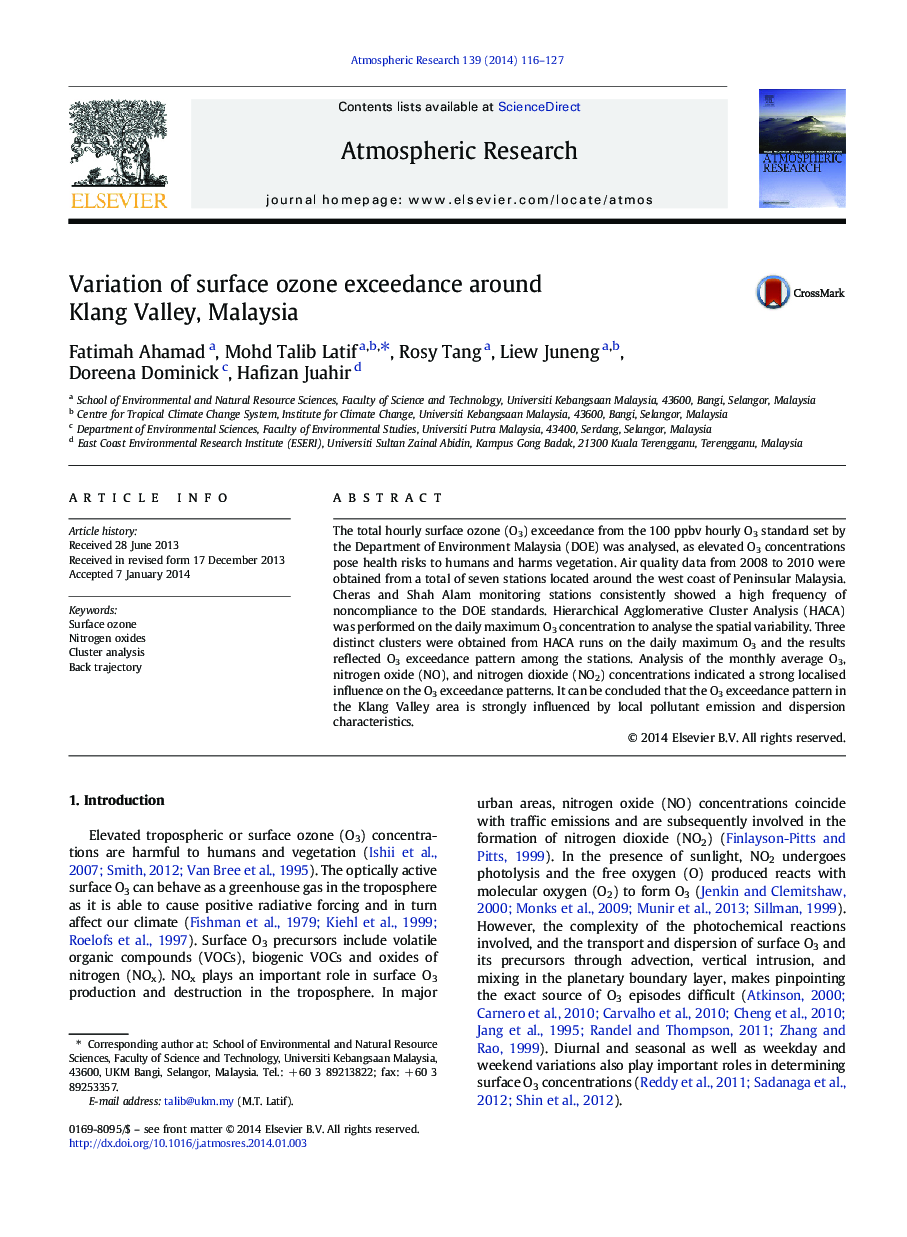| Article ID | Journal | Published Year | Pages | File Type |
|---|---|---|---|---|
| 4449960 | Atmospheric Research | 2014 | 12 Pages |
•Hourly surface O3 exceedance from the 100 ppbv was analysed around Klang Valley.•Air quality data from 2008 to 2010 was obtained from seven different stations.•Three distinct clusters were obtained from HACA analysis.•O3 is strongly influenced by local pollutant emission and dispersion characteristics.
The total hourly surface ozone (O3) exceedance from the 100 ppbv hourly O3 standard set by the Department of Environment Malaysia (DOE) was analysed, as elevated O3 concentrations pose health risks to humans and harms vegetation. Air quality data from 2008 to 2010 were obtained from a total of seven stations located around the west coast of Peninsular Malaysia. Cheras and Shah Alam monitoring stations consistently showed a high frequency of noncompliance to the DOE standards. Hierarchical Agglomerative Cluster Analysis (HACA) was performed on the daily maximum O3 concentration to analyse the spatial variability. Three distinct clusters were obtained from HACA runs on the daily maximum O3 and the results reflected O3 exceedance pattern among the stations. Analysis of the monthly average O3, nitrogen oxide (NO), and nitrogen dioxide (NO2) concentrations indicated a strong localised influence on the O3 exceedance patterns. It can be concluded that the O3 exceedance pattern in the Klang Valley area is strongly influenced by local pollutant emission and dispersion characteristics.
